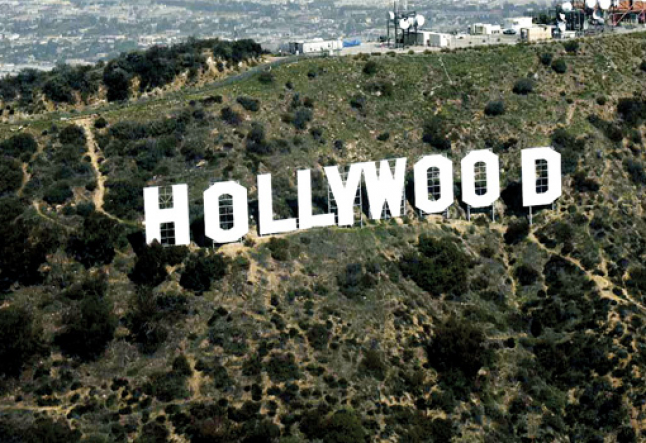visions of a conscious hollywood

conscious movies hollywood
Hollywood may still be a town where one’s self-worth rises or falls according to the weekend’s box office numbers, but things are changing.
According to Charles Kennedy of DYG, Inc., a firm specializing in social trend expression through entertainment, the mantras of the ’80s and ’90s such as, “Greed is good,” and “He with the most toys wins,” are becoming obsolete. Kennedy said that if filmmakers want to touch audiences today – especially the growing altruistic subculture of the 50 million cultural creatives – they must tap into themes that express an “attitude of gratitude.”
Unfortunately, before a filmmaker can supply audiences with uplifting, pro-social stories, he or she must first get past some pretty tough gatekeepers. First and foremost are Hollywood executives who, for the most part, are still motivated by fear and money. According to Chris Adams of Participant Productions, “most executives fear that if they stick their neck out to get a project made and it’s not successful, they’ll be fired.” Thankfully, as more and more business leaders such as former eBay president Jeff Skoll move into the entertainment world, filmmakers are able to circumvent the studio route and partner up with like-minded individuals.
In 2004, Skoll founded the production company Participant, in order to produce compelling, issue-driven films and allow audiences the opportunity to contribute. A good example of this is their movie, “Good Night, and Good Luck,” which was directed by George Clooney and tells the story of famed broadcast journalist Edward R. Murrow’s fight against Senator Joseph McCarthy. Participant has joined forces with the ACLU, PBS, and NPR so that, in the spirit of the movie, viewers can go to their website and report on an important story from their own community that the media has been ignoring.
It’s great to have companies like Participant on the rise, but how does a storyteller deal with, as The Aware Show’s radio host Lisa Garr says, those who are “still stuck in a place of drama and don’t yet know the ways to unlock that place in their brains that can give them a brand new life?” As Dr. Jonathan Young, founder of the Center for Symbol and Story explained, “Sometimes one has to use the Trickster archetype to get something through.” Young explained that when Bill Moyers first pitched his idea for “The Power of Myth” with Joseph Campbell to PBS, the network passed, citing the classic excuse, “No one will watch it.” Thankfully, Moyers had some unrestricted money and made it anyway. It went on not only to be one of the most successful series in the history of the network, but it also influenced a new generation of storytellers.
Olivia Barham is one of those storytellers. Barham worked as an executive in the studio system for years before getting burnt out from working on projects that didn’t move her. “I realized the subject dear to my heart is peace,” she explained. So she left to produce a documentary series called “The Science of Peace,” hosted by LeVar Burton. This documentary is about the causes of conflict and the pathways to peace from a scientific perspective. Sometimes the key to convincing the powers that be about the viability of a project is to include, rather than exclude, them. “I wanted to do something about peace and since science is accepted, that’s why I chose it,” she said. Although she’s still working on getting the financing together, she’s not worried. “I feel I’m in integrity with who I really am – I’m in peace,” she says. “I’m just holding the space and waiting for the window to open because it’s all in the timing.”
Barham’s conscious approach to filmmaking is emblematic of what James O’Dea of the Institute of Noetic Sciences sees as a growing trend. “It’s difficult to have conversations with people whose values are different from us,” he explained, which is why writers and filmmakers need to be flexible. “Take two paradoxes a day,” is his prescription for getting messages of consciousness across. “When all of your truths line up without those juicy spaces in between, that’s fundamentalism,” he says.
Hollywood may be slow to jump on the consciousness bandwagon, but they are indeed following. John Raatz and his Visioneering Group, the self-proclaimed “public relations firm linking spirit, vision and values with communication to promote a positive future” was behind the huge success of “What The #$*! Do We (K)now!?”. Visioneering Group partnered with the lifestyle company, Gaiam, with the goal to acquire films themselves. As Charles Kennedy pointed out, even Donald Trump is getting into the game. On a recent episode of his reality show, “The Apprentice,” he gave future moguls the assignment to do something pro-social. In fact, it’s society’s thirst for authenticity that explains the huge success of reality programming, even if it makes some viewers uncomfortable. “Reality TV taps into this huge hunger for something real,” Kennedy said.
Sounds like good advice not only for the next generation of writers and filmmakers, but also for everyone.
writersconference.com – consciouscreativity.org
Read next >> indian festival of diwali